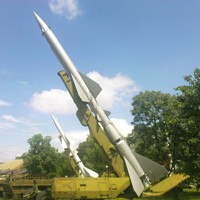Syria shot down a Turkish warplane last week, raising tensions between the neighbors to an all-time high. In an email interview, Sean O’Connor, a contributor to IHS Jane’s and an expert in air defenses, reviewed the state of Syria’s air defenses.
WPR: What are Syria's current air defenses, and what are their particular strengths and vulnerabilities?
Sean O’Connor: A comprehensive analysis of available commercial imagery indicates that Syrian strategic air defenses primarily consist of Soviet-era surface-to-air missile (SAM) systems occupying a total of 76 fixed-site locations. A further 101 fixed-site locations are present to serve as either defensive improvements employing garrisoned equipment or relocation sites to complicate targeting efforts. The primary strategic SAM systems in service are the S-75 (SA-2 Guideline), S-125 (SA-3 Goa) and S-200 (SA-5 Gammon). Like many other Middle Eastern states, Syria also employs tactical SAM systems in a quasi-strategic capacity, deploying a total of 39 identified 2K12 (SA-6 Gainful) batteries among 69 identified site locations, primarily concentrated along the borders with Lebanon and the Golan Heights. The remaining SAM systems primarily deploy in three areas: a coastal barrier between Latakia and Tartus, an inland barrier between Aleppo and Hims, and the southwestern region including Damascus and the aforementioned border areas.

